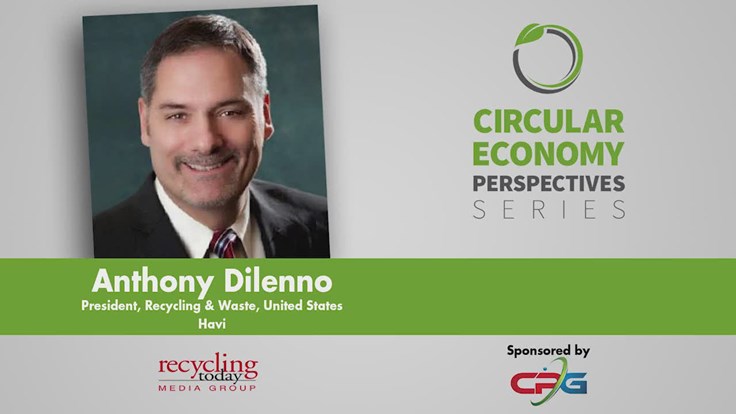Many alternative energy efforts get their starts with an application for a government grant or a proposal designed to tie into a specific tax advantage.
Greenwood Energy has applied for and received low-interest government-backed loans, but General Manager Ted Hansen says his company has created its business model specifically to “avoid reliance on unreliable government subsidies.”
New York-based Greenwood Energy is ramping up a facility in Green Bay, Wis., based on following that premise. It can handle 150,000 tons of inbound material while creating a fuel pellet that can compete with or supplement coal as boiler feedstock.
According to its website www.gwenergy.com, the fuel pellet production is a key part of one of the two main divisions of Greenwood Energy, the Fuels division. The other division focuses on “clean power generation [and] investing in and evaluating a number of projects across the biomass, fuel cell, hydro and biogas spaces.”
Having yielded positive early returns, Greenwood Energy’s project in Green Bay now signifies just a start to a wider plan to build several similar facilities in other parts of the country.
Sensible Engineering
Hansen and the other leaders of Greenwood Energy have designed an energy-from-waste process that targets certain identifiable feedstocks and that then converts those materials into a fuel pellet that can appeal to a broad and ready market.
The materials that Greenwood Energy acquires fall into four categories:
- non-recyclable papers;
- label waste;
- flexible films (packaging); and
- non-woven fabrics.
“These materials are generated in large quantities, contain a high level of energy content and burn very cleanly,” says Hansen.
The Greenwood process is not limited to these materials only, according to Hansen. “There are many other materials available which can and will be utilized as the company grows,” he indicates.
Hansen is familiar with many of these incoming materials thanks to his previous work experience. “Most of my career has been in operations management of manufacturing facilities,” he notes. Hansen has a degree in chemical engineering and more than 20 years of experience in the paper, consumer products and non-wovens industries. (Non-wovens refer to fabrics that are neither woven nor knitted, but instead bonded together by a chemical, mechanical, heat or solvent process. Felt and materials used in disposable hygiene products are examples.)
“I worked 14 years with Kimberly-Clark and five years with AstenJohnson,” says Hansen. “At Greenwood Energy, our waste raw materials are primarily related to these industries, which has made working here a good fit.”
Procuring a steady stream of material is one of the vital considerations in Green Bay. Hansen says Greenwood Energy “partners with local waste haulers to provide a sustainability solution to their customers.”
At the 60,000-square-foot Green Bay facility, inbound material goes through a several-step process to prepare it as boiler feedstock.
“Our process involves sorting the waste materials, mixing, shredding and pelletizing the waste materials in order to achieve a level of consistent energy content in the pellet,” says Hansen.
The mixing process—and doing it properly—can be the most crucial aspect. “Pelletizing any one of the raw materials can be very difficult and often produces a sub-optimized fuel,” notes Hansen. “Our ability to successfully blend the correct waste materials in large quantities sets us apart.”
The effort and forethought that has gone into the materials procurement and blending process serves to create a fuel product that Hansen says is not difficult to bring to market.
Market-Ready
America has long relied on coal for part of its energy needs and will continue to do so for the foreseeable future. However, concerns about carbon dioxide emissions have led to regulations such as the federal boiler maximum achievable control technology (MACT) standards.
|
PHILOSOPHY 101 The alternative energy market, including the energy-from-waste sub-sector, can be a high-risk proposition with case studies of failed companies available to those seeking such reading material. When asked about the business philosophy of his company, Ted Hansen, general manager of New York-based Greenwood Energy, offers several thoughts on a range of topics that includes narrowing in on the right target and seeking alliances:
|
The MACT standards have been designed to set a standard for boiler operators based on the emission reductions results achieved by the 12 percent of boiler operators with the best pollution control equipment and systems in place.
“Many customers are facing significant capital costs to upgrade boilers to meet the upcoming MACT Standards,” says Hansen. “Our pellets have demonstrated the ability to help some customers meet the proposed standards with no boiler modifications required. This will make our pellets a cost-effective alternative to expensive capital solutions.”
The pellets can replace coal in boiler applications, says Hansen, at an almost direct 1:1 ratio. “Approximately one ton of pellets displaces one ton of coal.”
The Greenwood Energy team continues to work to acquire steady volumes of suitable feedstock. That effort has included the creation of three transfer stations (in Minneapolis, Milwaukee and Dayton, Ohio) that serve as “waste collection sites for local haulers to aggregate waste feedstocks,” says Hansen.
With transportation costs being critical, the transfer stations allow Greenwood to acquire material from markets beyond the 100-mile radius of Green Bay.
Positive Signals
Hansen is pleased with how operations have progressed in Green Bay, and he and the other executives who lead Greenwood Energy are formulating significant expansion plans.
“We are actively working to expand and build additional pellet facilities throughout the U.S.,” says Hansen. As well, “Greenwood Energy has already expanded into electricity and steam production, and we are exploring other fuel and power generating technologies.”
Hansen also says he is encouraged by wider business and societal trends when it comes to the handling of discarded materials.
“Environmental awareness is increasing throughout the country,” states Hansen. “Countries in Europe have banned industrial waste generators from sending waste to the landfill. These types of regulations and trends will expand to the U.S. and we hope to offer cost-effective solutions as landfill costs increase.”
The author is editorial director of Renewable Energy from Waste and can be contacted at [email protected].



